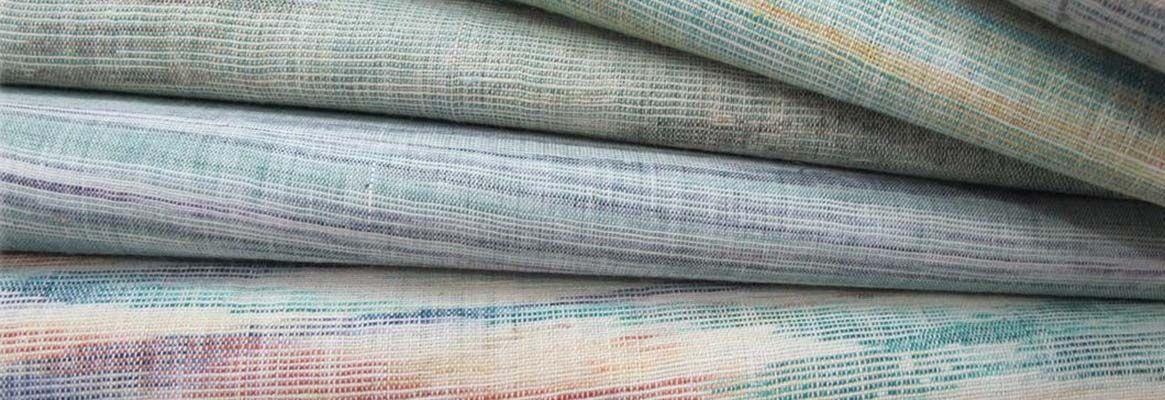Khadi, which started as a symbol of the Swadeshi Movement led by Mahatma Gandhi 100 years ago, is now a fashion statement in India and is gradually getting popular across the globe, says Ashok Athalye
Khadi is a textile fabric made by hand-spun and hand-woven cotton, silk, wool or a mixture of these fibres. It is a traditional way of textile manufacturing and is generally produced by rural artisans. The method of manual spinning and weaving makes the fabric structure somewhat rugged and imparts a unique appearance and makes it soft and comfortable to wear. The spinning is carried out on a traditional wooden frame called charkha, while the weaving is done on a handloom. The specific fabric construction helps in circulation of air within the threads and imparts unique property of keeping the wearer warm in winter as well as cool in summer.
Significance of khadi
India has an ancient heritage of cloth making based on the availability of natural fibrous raw material such as -agricultural cotton owing to the clement climatic conditions and fertile land, varieties of silk from different sericulture and wool from domestically reared sheep. The textile coloration was carried out using abundantly available natural dyes, derived from various plant and animal extracts.
Such flourishing textile base was one of the major attractions for the western world. After mechanised industrialisation, the situation changed and the basic raw material was exported from India, converted into mill-processed finished cloth and the imported fabric was brought back. This led to the demolition of traditional textile manufacturing in India and eventually the art and craft of fabric making diminished.
During the initial phase of the freedom struggle, national leaders like Dadabhai Naoroji and Lokmanya Tilak initiated the Swadeshi Movement to promote Indian-made products. However, it was Mahatma Gandhi who in 1918 brought the focus of India's freedom struggle to khadi by promoting that as a Swadeshi symbol.
Under the leadership of Mahatma Gandhi, khadi-making regained momentum and became a symbol of revolution and resistance. It also provided employment to the vast rural population of India and achieved distinct identity as a common man's cloth. As everybody could wear the same form of clothing without any distinctions of class, creed or religion, they could demonstrate solidarity in freedom struggle. Wearing khadi became a matter of national pride and united the population of India by surpassing the divisive system of the region, language, religion, caste, age and gender. It reflected our country's legacy of sustainable living and self-reliance. The Indian national flag is also made from khadi material.
Growth and transformation
After independence, the Khadi Village and Industries Commission (KVIC) initiated research in the manufacturing techniques and tools to improve quality and promote khadi products. It established hundreds of new khadi institutions and trained thousands of artisans. This tremendously boosted production of khadi fabric. Further, the developments in high production capacity charkha or spindles, synergistic blending of different fibres, promotional material and shade cards helped enhance the number and variety of khadi products apart from boosting production.
An estimated 15 lakh people are now engaged in producing over 12 crore metres of khadi. KVIC is taking further steps to enhance its production as the market demand for such products is much more than the supply. A new programme is expected to establish the 'Khadi Mark' and a logo to indicate the genuineness of the product.
The financial support provided and the political will exerted by the present government and the special emphasis from Prime Minister Narendra Modi has helped boost employment in the manufacturing and promotion of khadi products. Leading film artists, sports personalities and fashion designers have come forward to promote this unique 'Made in India' fabric in the global arena.
Khadi products
Khadi is natural and durable in nature, which makes it unique. Khadi ideally suits Indian weather conditions. Different varieties of khadi are made in various parts of India. The design pattern and associated style distinguishes and enhances the beauty of the product and reflects the diversity of the country. Some popular products are:
- Cotton khadi: Super fine muslin, Kuchchi mirror, kalamkari dresses
- Silk khadi: Patola, chanderi, pochampalli, kanchipuram sarees
- Wool khadi: Pashmina and kulu shawls
- Poly khadi: Articles with polyester blends
Nowadays some schools have started observing 'Khadi Day', on which students are expected to wear khadi on that day of the week. Even many public as well as private sector organisations are encouraging employees to wear khadi on the working Saturdays. The commonly used khadi apparel are dhoti, shirt or kurta, trousers, jackets, salvaar-kameez, dupatta, saree, scarf or stole and jholaa (shoulder bag).
As khadi is prepared from natural fibres manually, it is expected that the processing should also be done using natural dyes and treated under environment-friendly conditions. Initially, natural dyes and pigments sourced from various plant parts like leaves, flowers and stems and from some color-producing animals were used. Subsequently, considering the limitations in terms of availability of consistent quality, eco restrictions on metal containing binding agents and inadequate wash light fastness properties of such naturally-occurring coloring components, artisans started exploring other economic and ecological options from the easily available range of synthetic dyes.
The durable and long lasting nature of khadi necessitates it is coloured using non-fading, wash-resistant variety of dye. Various dye classes, such as vat, reactive, sulphur, direct and metal complex acid, are preferred for colouring khadi. Generally, the dyeing is carried out either on the yarn or hank form in wooden vats, buckets or pits, and on the fabric on open jiggers. The atmospheric temperature conditions preferred for processing warrant the least thermo-mechanical operations, which suites such a cottage industry. The printing is usually carried out by hand using wooden blocks and the yarn or fabric drying is done by hanging it on bamboo bars or strings. Considering such requirement of simple equipment and ease of application, generally, the dyestuff selection is done as shown below:
Cotton and Jute: Novatic Acra, concentrated powder fine vat dyes
ProvionM, high fixative cold brand reactive dyes
Wool and Silk: Metalan, high wash fast metal complex dyes
Tulacid, bright and vibrant acid dyes
For colouring cotton, vat dyes are preferred for pastel shades where the light and wash fastness are critical end use requirements, while the reactive dyes are used when medium to dark and bright shades are to be developed. Similarly, for colouring wool and silk, dark and dull shades are obtained by using metal complex dyes, while bright and vivid shades are obtained by using levelling type acid dyes. The printing is usually done using organic as well as inorganic pigment dispersions with the help of suitable binders.
Khadi fashion
Considering khadi's eco-friendly and natural origin, it has become a focal point of global fashion owing to growing consumer awareness and the consistent demand for sustainability.
Fashion designers have acknowledged the aesthetic appeal and comfort attributes of khadi and experimented it in blending with many other stuff to synergistically enhance the fashion appeal and outlook of products. Khadi is now used in denims, jackets, shirts, dress material, stoles, home furnishings and apparel accessories like handbags.
Khadi, once considered as the fabric for political leaders and the rural folk, has entered the wardrobe of the fashion-conscious urban population. Wearing khadi now symbolises affluence as it offers a distinguished look. The ecological aspect and ethnic looks of khadi have caught the fancy of global brands and leading fashion designers have started including khadi material in their collections.









Comments